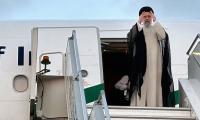Once upon a time, the region that is now Pakistan was South Asia’s prime trading hub. Be it during the time of the Indus Valley civilisation, the Taxila Buddhist kingdoms, the Muslim fiefdoms or the Sikh empire, the region linked the markets of Iran and Central Asia in the west to those in India, China and Burma in the east. The land was a link for the spread of commerce and culture in South Asia.
Pakistan has successfully strived to live up to the region’s legacy, creating important links with its age old trading partners. However, with its alienated sibling, India, Pakistan has been unable to stimulate the lucrative trade of the past.
Soon after their creation in 1947, India and Pakistan were healthy trading partners. India served as a market for half of Pakistan’s exports of agricultural products and minerals, and supplied a significant share of Pakistan’s imports consisting of manufactured goods. However, the wars of 1965 and 1971 and the uprising in Kashmir in the 1990s sidetracked bilateral trade with the monumental task of resolving land disputes.
The situation was made worse by military dictatorships in Pakistan and a xenophobic sense of nationalism on both sides. In 2012, the Federation of Indian Chambers of Commerce and Industry placed India-Pakistan bilateral trade at $2.75 billion, highlighting its potential to rise up to $10 billion in 2016.
Four years on, India and Pakistan are yet to hit that mark. Trade primarily involves a trickle of trucks carrying perishable goods, sports goods, processed food products, machinery and staple cotton amongst others across the Line of Control. It also includes expensive and time-consuming transit trade via Middle Eastern capitals like Dubai and Tehran. Recently a friend from Pakistan had sent me a package; it took over a month to be delivered even though the distance between Islamabad and New Delhi is 700 km.
Before the Sharif regime, Asif Ali Zardari’s PPP became the first democratically elected government in the history of Pakistan to complete a full term. Sustained democracy seems to have had a sobering effect on Pakistan, where the government understood the policy of placating cross-border tensions with India through a win-win scenario of boosting bilateral trade. This change was welcomed by the UPA II government as well as the Indian business community.
In September 2011, Pakistan’s then commerce minister Makhdoom Amin Fahim met his Indian counterpart, Anand Sharma, to kick-start talks to normalise trade. The late Fahim became Pakistan’s first commerce minister to visit India in 35 years. Both countries’ trade ministries made a joint statement to lay out a plan to remove all non-tariff barriers. The same year, Pakistan took the historic step of granting the ‘Most Favoured Nation’ status to India. Pakistan also announced plans to cut its ‘negative goods’ trade list to open up its domestic market to Indian businesses.
Complementing the move, the then Indian prime minister Manmohan Singh immediately announced his intention to move towards a Preferential Trade Agreement with Pakistan for zero customs duty on all traded goods by 2016. However, in February 2012, the Pakistan government deferred its decision to prune its Negative List after prominent political parties raised concerns of Indian goods flooding Pakistan’s market and hampering domestic industries.
Under the UPA II regime, India-Pakistan negotiations, informal meets, photo-ops & trade fairs consistently showed healthy signs of India-Pakistan trade relations. However, under the Modi government, terrorism has taken centre-stage in the India-Pakistan agenda in the wake of the Gurdaspur, Udhampur and Pathankot terror attacks. Trade talks seem to have been suspended indefinitely.
Effective and prudent bilateral ties must be multi-faceted, where multiple avenues – national security, economic ties and cultural exchange – can be pursued simultaneously. As Prime Minister Modi projects himself as an international statesman, it is essential to pursue the ‘thorny’ India-Pakistan ties in such a manner.
Economic cooperation can set the foundation for the active cross-border movement of intangible industries like education, entertainment and culture. The progression of such cooperation can nurture economic, social and cultural solidarity between India and Pakistan. It can establish strong ties, the promise of a lasting peace, and bring two extremely similar yet estranged societies closer.
Like the UPA and PPP governments, the Modi and Sharif governments too can exert some diplomatic and cultural pressure on each other, making it more lucrative for the governments to expand bilateral ties and cooperation instead of a 60-year old aggression policy.
The writer is a senior news editor at CNN-IBN in India.
Email: ayushmanjamwal@gmail.com
Twitter: @Jamwalthefirst
A health worker administers polio vaccine drops to a child during a door-to-door polio vaccination campaign in Lahore,...
Armed militants of the banned Tehreek-e-Taliban Pakistan pose for a photograph in Orakzai Agency. —...
An aeroplane of the national flag carrier of Pakistan is seen in this file photo. — AFPWhile Pakistan considers...
Representational image of a graph depicting various variables. — APP/FileInitiated by the centre and fiercely...
In this picture taken on April 16, 2023, people throng a market area during shopping in Lahore. — AFPOne of the...
Honour crimes also target men. In Sikandar Ali Lashari vs The State, SHC upheld conviction passed by ATC for honour...







